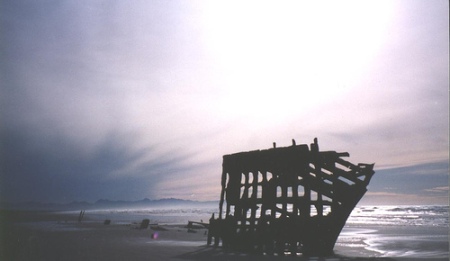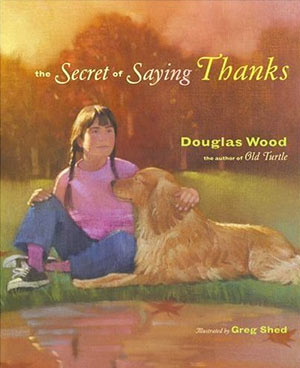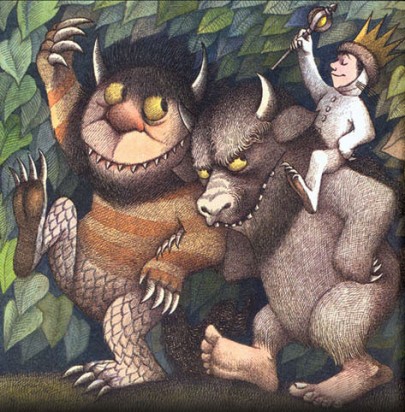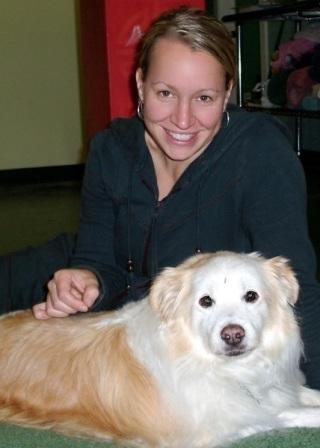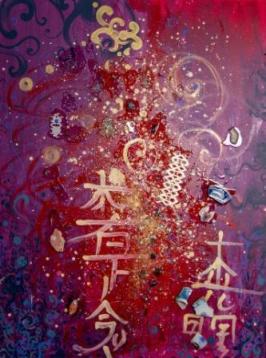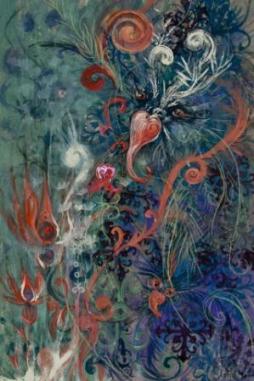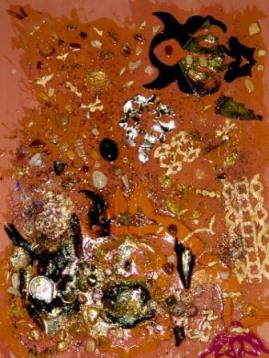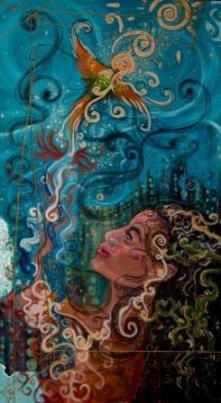The House on Mango Street
Sandra Cisneros
The story of Esperanza Cordero, a young girl growing up in the Latino section of Chicago. Esperanza’s thoughts and emotions are expressed in her fable-like poems and stories, which portray the alternating beauty and desolation of her life and its realities. Esperanza doesn’t want to belong—not to her rundown neighborhood, and not to the low expectations the world has for her. Esperanza’s story is that of a young girl coming into her power, and inventing for herself what she will become.
–From Random House Publisher
More about Sandra Cisneros
Character Head
Franz Xaver Messerschmidt
Franz Xaver Messerschmidt (1736 – 1783) was a successful sculptor whose work was sought by the royal Viennese court. In 1774 he lost his position at the Academy of Fine Arts Vienna due to “confusion in the head”. Modern scholars suggest Messerschmidt suffered from mental illness and Crohn’s diseases. He dedicated his last years to creating over 60 Character Heads (many of them self portraits) expressing severe emotions and facial contortions.
More Character Heads by Franz Xaver Messerschmidt
Healing Quote of the Day
Twenty years from now you will be more disappointed by the things you didn’t do than by the ones you did do. So throw off the bowlines. Sail away from the safe harbor. Catch the trade winds in your sails. Explore. Dream. Discover.
Where the Wild Things Are
Maurice Sendak
Maurice Sendak (1928-2012) discovered books and began drawing during his childhood when he was forced to stay indoors due to poor health. He once shared, “A little boy sent me a charming card with a little drawing on it. I loved it. I answer all my children’s letters – sometimes very hastily – but this one I lingered over. I sent him a card and I drew a picture of a Wild Thing on it. I wrote, ‘Dear Jim: I loved your card.’ Then I got a letter back from his mother and she said: ‘Jim loved your card so much he ate it.’ That to me was one of the highest compliments I’ve ever received. He didn’t care that it was an original Maurice Sendak drawing or anything. He saw it, he loved it, he ate it.”
The Patience of Ordinary Things
Pat Schneider
It is a kind of love, is it not?
How the cup holds the tea,
How the chair stands sturdy and foursquare,
How the floor receives the bottoms of shoes
Or toes. How soles of feet know
Where they’re supposed to be.
I’ve been thinking about the patience
Of ordinary things, how clothes
Wait respectfully in closets
And soap dries quietly in the dish,
And towels drink the wet
From the skin of the back.
And the lovely repetition of stairs.
And what is more generous than a window?
Pat Schneider is a poet, playwright and author living in Amherst, Massachusetts.
Till it Shines
Bob Seger
Like an echo down a canyon
Never coming back as clear
Lately I just judge the distance
Not the words I hear
I’ve been too long on these islands
I’ve been far too long alone
I’ve been too long without summer
In this winter home
Still if we can make the effort
If we take the time
Maybe we can leave this much behind
Till it shines
More from Bob Seger
Youtube Post by MrJilujoow
Artist Darla Rewers
My art keeps me balanced and practiced in transforming concept and intention into the material. It is my daily practice of manifesting that which I hold to be true and beautiful: love and healing.
Growing up in Indianapolis, Darla Rewers always knew she was an artist. She also knew that she wanted to be a veterinarian. After receiving her B.A. in Biology and Fine Arts at the University of Indianapolis, she went on to pursue her Doctorate of Veterinary Medicine at the University of Florida. Her call to healing led her to become a certified veterinary acupuncturist and in 2008, Dr. Rewers opened Ancient Arts Veterinary Services (Link). Her office in the Fremont neighborhood of Seattle also doubles as an art gallery which displays Darla’s mixed media works. A life long learner, Dr. Rewers constantly strives to master the latest (or more ancient) methods of healing and well being. When she’s not seeing patients, attending classes or teaching workshops, you can find her immersed in her artwork, going for walks in the woods, enjoying music and spending time with friends (both human and furry). Her full time assistants include Sophi, a 16 year old Border Collie – Aussie mix, and two cats named Frankie and Zenkey.
Darla, thank you for taking time out of your busy schedule to talk to Healing Hamlet! In addition to being an artist, you are a licensed veterinarian, certified acupuncturist and traditional Chinese veterinarian, Qi Gong instructor, Reiki Master, shamanic healer, ordained minister, counselor…. Phew! Did we leave anything out?
I teach Chiga–my own stretching/dance type of energy cultivation that is more fluid than typical qi gong, and more user-friendly than yoga. I also teach shamanic journeying techniques, art intentionality workshops, animal massage, reiki, and other healing techniques.
You studied fine arts before entering veterinarian school and studying healing arts. Which came first for you, the desire to create art, your connection with animals or your calling to heal?
I was always an artist AND connected to nature, from day one. To me these things are inseparable. I wanted to be a vet because I wanted to help animals with their well being—both physically and emotionally. Veterinary medicine was the official route, but what I do goes beyond that, so I had to create my own structure and ongoing curriculum. I double majored in art and biology, then in vet school learned the skills of diagnosing, performing surgery, prescribing medications correctly, etc. However, healing involves more attention to the subtle life force of a patient. Sometimes healing and practicing medicine overlap, and sometimes they are quite different paths. Discerning the distinction is an art in and of itself.
How has your journey through healing studies and practices evolved? How has art remained an integral part of this evolution?
My art keeps me balanced and practiced in transforming concept and intention into the material. It is my daily practice of manifesting that which I hold to be true and beautiful: love and healing. Art transfigures the pain of disease, toxicity and sorrow into something aesthetic and health-promoting. If you look closely in my paintings, you’ll see acupuncture needles, herbs, and packaging from traditional Chinese medicinals. From the process of creating transformative art I learn to be a better healer. Over the years I have become more sensitive to the subtleties of energy in my patients and their people as a result of spending time doing meditative art.
Art (and academic) scholarships paid most of my undergraduate tuition. Pottery sales kept me from starving during vet school. Now the clinic space provides gallery walls to share my art. The art really adds to the healing of the hospital space. Sometimes clients have been bringing their pets in to the clinic for years before they realize that it’s my art on the walls!
You have integrated your artwork into your veterinary clinic, combining art gallery and healing space. In what way has this affected your veterinary practice?
Nine out of ten clients comment that they feel better immediately upon entering the healing space. This is no accident. When we are inspired by music or visual art, our immune systems are enhanced, our healing component of the nervous system takes over (as opposed to the reactive, fight-or-flight nervous system), and we become more relaxed
You have combined your three loves: art, healing and animals, in your Healing Art which you create to support veterinary wildlife conservation. How did this concept originate? Which conservation efforts have you been involved with?
I want to preserve biodiversity because I love our home—Mother Earth, and all her creatures. I truly feel that we are all interconnected, and that we all contribute to the earth’s overall health as well as our own. As a child reading about the Amazon, I became fascinated with the plant medicine used by the shamanic healers there. As I got older, I learned that the science of using plants as medicine is called pharmacognosy. At that time only 1% of the earth’s plants had been studied for medicinal properties. From that tiny percentage, over 25% of the pharmaceuticals on the market had been developed. What cures for diseases, such as cancer, are we destroying when we allow rainforests and other ecosystems to be destroyed? Within the ocean, fish and other forms of life may hold additional answers for the health of humans. There are fish who routinely clean their own arteries of plaque! The planet’s diversity of life has so much to share and teach us if we can take the time to protect and learn from it.
The concept of my art funding conservation is an ongoing effort. Right now I merely help wildlife and strays that find me through natural healing methods. I try to keep my own vet practice as green and sustainable as possible and educate clients about natural, non-toxic methods for improving the health of their pets and family. I would love to get into zoopharmacognosy—the study of plants wild animals use as medicine. This information could be useful for pets, people and zoo animals, as well as for sustainability, and conservation efforts. I would also like to create a network of healing resources around the globe, promoting the natural and traditional healing techniques of different cultures in their respective areas. I intend to expand my conservation efforts when I have the resources to do so. But for now, I mostly do this “in my own back yard.”
What type of art do you create? Where do you find inspiration for your pieces?
I like to use found items—such as bits of rubbish, feathers, stones, sand, glass, leaves, bark, etc., and create mixed-media paintings. My inspiration comes from nature and my dreams. I try to represent my ideal of creating beauty: transformation through intention, using rough materials and pure potential. We may not like what we find around us, but we have working hands and able bodies and minds. I hope to contribute to the beautification and betterment of this universe.
You continually build upon your knowledge of healing by engaging in educational programs, seminars and world travel. Do you see yourself as a life long learner? How do new experiences and information influence your artwork?
Life is definitely an ever-evolving learning trip! I recently completed a course on Bioregulatory Medicine and Homotoxicology (healing through gentle low-dilution detoxification) through the international College of Integrative Medicine. I am continually humbled by exposure to other artists, healers, and community members who share practical wisdom, beauty, compassion, and truth. I learn continually from my patients, clients, my own animal friends, people friends, antagonists, etc. I learn and receive messages from the most random strangers and passers-by, if I am open to hearing. So I am continually trying to be more and more receptive to hearing. I am currently enrolled in Sandra Ingerman’s teacher training program for shamanic healing, so that I may share with others how to tap into the spiritual aspects of healing. This has helped tremendously with end of life transitioning for our pets, communicating with animals, grief counseling, and navigating transitions. There really is a whole vast world of possibilities when we learn additional tools for dealing with life’s challenges.
What is the most unusual animal you ever treated?
I drew blood on a wallaby once. I learned how to do some techniques on alligators, also biopsies and anesthesia on fish. My hand disappeared when I cleaned out a deep gash on the bum of a white rhino inSouth Africa(the work of another rhino’s horn!)
If you could have a conversation with any animal, which would you choose and what would you ask?
I would like to ask a hummingbird if he is just playing chase or actually intending to be ferocious when he flies after another hummer. I would also like to ask my cat what he and his “friend” that he “plays” with really think of each other.
What advice would you give pet owners who want to be the best care givers to their furry (or scaly or slimy) companions?
Take time every day to just sit and be present with your pets. This should be quality, quiet, reflective time in addition to the regular exercise and play time. Often you will bond more deeply and have a clearer idea about your pet’s needs by doing this. Make sure to groom your pet and give them massages routinely. The regular contact with their bodies will allow you to notice a lump, tight muscle or change in mobility earlier. Take the time to teach them new tricks and try to learn a communication style that enhances your interactions with your pet. Animals love when we acknowledge their consciousness. The more we invest in them, the more they can feel comfortable to blossom as a living sentient being with a unique personality.
Think about the further reaching implications of all your daily actions. For example, try to support organic practices to minimize pesticide residues. Explore non-invasive techniques such as acupuncture, nutrition and physical therapy for your pet, as an option instead of surgery if possible. Support local businesses that are trying to make conscientious decisions for animals, the land and people. Never be afraid to get a second or third opinion when it comes to a medical procedure. Supplement your pet’s diet with fresh, wholesome foods. If unsure how, get guidance from a vet who enjoys discussing nutrition.
Anything else we should know about you?
I’m just beginning capoeira classes which I am really excited about!
Visit Darla Rewer’s Healing Art Website
Learn more about Ancient Arts Veterinary



